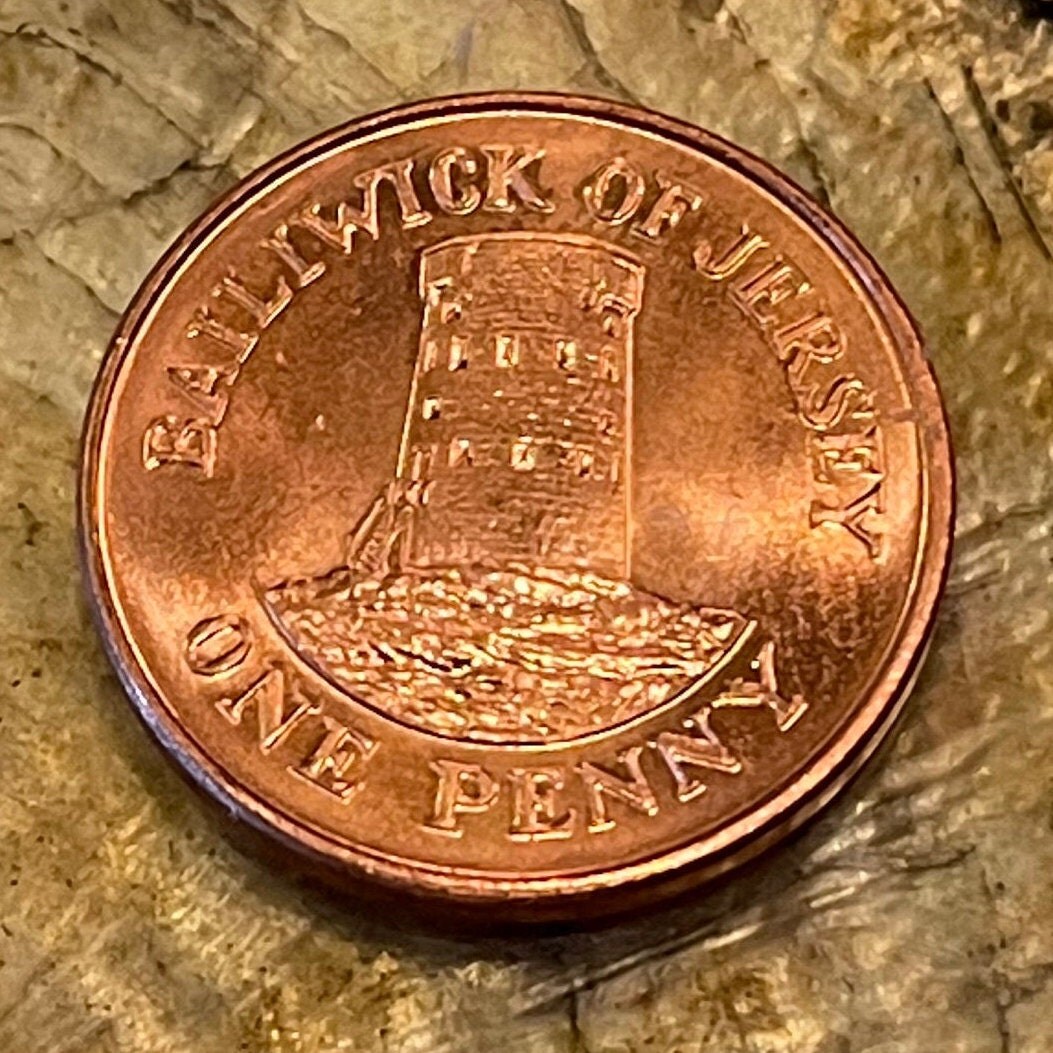elemintalshop
Le Hocq Tower 1 Penny Jersey Authentic Coin Money for Jewelry and Craft Making (Bailiwick of Jersey) (Jersey Round Tower)
Le Hocq Tower 1 Penny Jersey Authentic Coin Money for Jewelry and Craft Making (Bailiwick of Jersey) (Jersey Round Tower)
Couldn't load pickup availability
Le Hocq Tower 1 Penny Jersey Authentic Coin Charm for Jewelry and Craft Making (Bailiwick of Jersey) (Jersey Round Tower)
Obverse: Bust, with lettering, QUEEN ELIZABETH THE SECOND
Reverse
Le Hocq Tower (coastal defence)
Lettering: BAILIWICK OF JERSEY, ONE PENNY
Features
Issuer Jersey
Queen Elizabeth II (1952-date)
Type Standard circulation coin
Years 1998-2016
Value 1 Penny
0.01 JEP = USD 0.012
Currency Pound (decimalized, 1971-date)
Composition Copper plated steel
Weight 3.55 g
Diameter 20.27 mm
Thickness 1.7 mm
Shape Round
Technique Milled
Orientation Medal alignment ↑↑
Number N# 7264
References KM# 103
Wikipedia:
Le Hocq is an area in the parish of St. Clement, in the south-east of Jersey, Channel Islands. Le Hocq is a Jèrriais name, and means 'the headland' or 'the cape' in English.
The fortified Jersey Round Tower at Le Hocq, was built in the 1780s.
Jersey is a heavily fortified island with coastal fortifications that date from different periods such as the English Civil War, the Napoleonic Wars, and Nazi Germany's occupation of the Channel Islands. The fortifications include castles, forts, towers, Martello towers, artillery batteries, and seawalls. Not infrequently, fortifications from one period are built on the site of earlier fortifications, or very near them, geography having remained the same even when firepower increased.
On 28 May 1778 the Governor of Jersey, Field Marshal Henry Seymour Conway, submitted plans to Lord Weymouth for the construction of 30 coastal towers to forestall, or at least impede French incursions on the island. King George III granted approval and funding on 5 July 1778.
Work began in 1779, after a failed French landing at St Ouen's Bay on 1 May 1779. Perhaps four had been completed by the time of the Battle of Jersey in 1781, in which however they played no part. Guernsey, which the French did not attack, had built 15 loophole towers between 1778 and 1779.
Seymour Tower, which replaced an earlier tower on the same spot at La Rocque, was built of granite and was the only square tower. The other 22 towers that Conway had constructed were round.
Although frequently called Martello towers, the round towers are taller, and they predate the development of true Martello towers. The round towers differ from Martello towers in several ways. The Jersey towers are mostly built with local granite rather than brick, have a slighter batter (taper), and most importantly, originally did not have a cannon on the top platform. (The Guernsey round towers have a strong batter on the ground floor and no machicolations; they too initially did not carry a gun on the top platform.) Later, at the onset of the Napoleonic Wars, both the Jersey and Guernsey towers each received a 12-pounder carronade on a pivot mount for the top platform.
During the German occupation of the Channel Islands during World War II, the Germans adapted some of the towers to their own purposes. The Germans also destroyed several towers.
Some of the surviving towers have been painted on the seaward side to serve as daymarks (navigational aids). Archirondel is painted red and white, while other towers are painted white and red, or white, in whole or in part, again, on the seaward side. The order below is counter-clockwise from the north-west corner of the island.
*********
The Battle of Jersey (6 January 1781) was an attempt by French forces during the American Revolutionary War to invade Jersey and remove the threat the island posed to French and American shipping. Jersey provided a base for British privateers, and France, engaged in the war as an ally of the United States, sent an expedition to gain control of the island.
The French expedition ultimately failed. Its commander, Baron Philippe de Rullecourt, died of wounds sustained in the fighting. The battle is often remembered for the death of the British officer Major Peirson, and a painting based on his final moments by John Singleton Copley.
Share










Nice looking tower on the coin.
Elemintal always comes through !!









